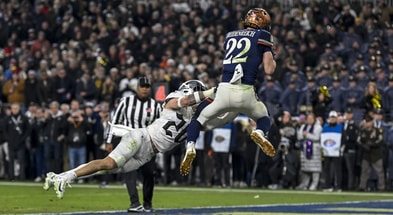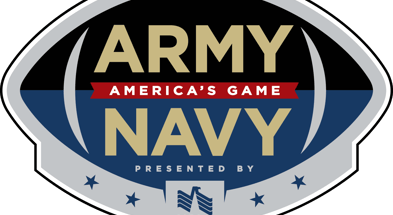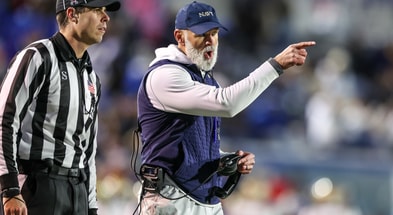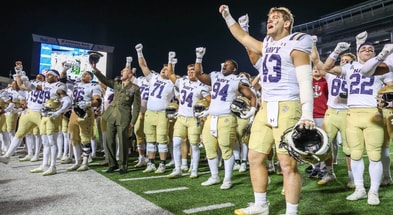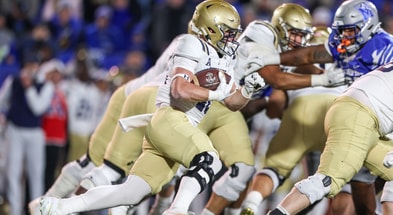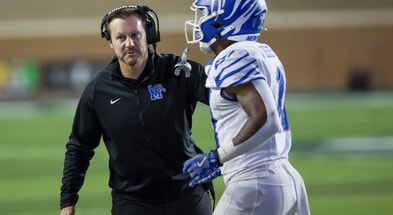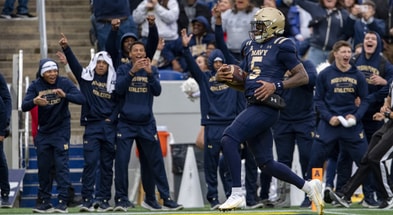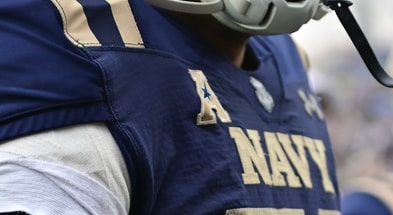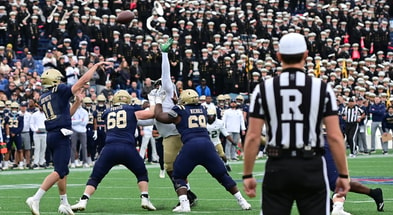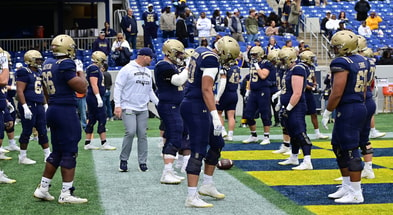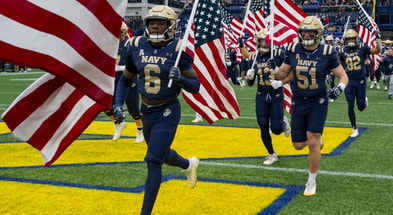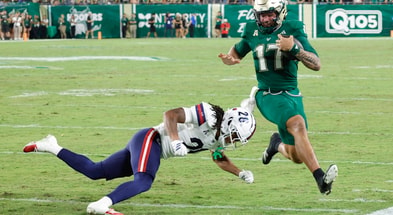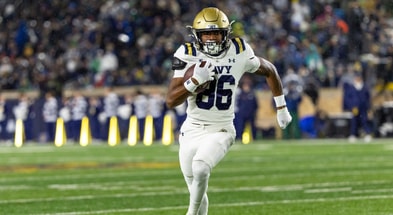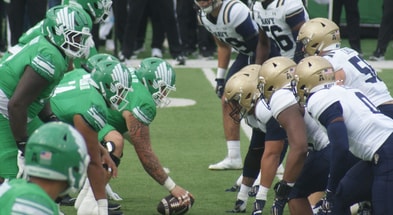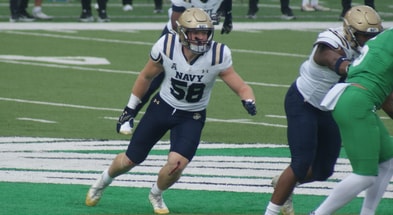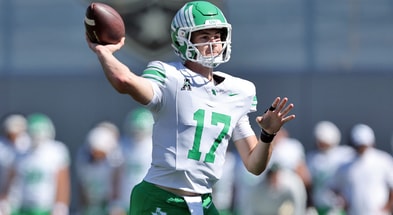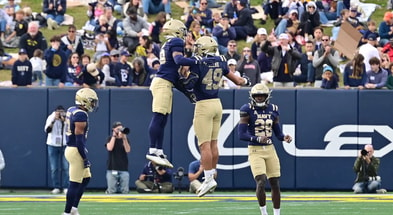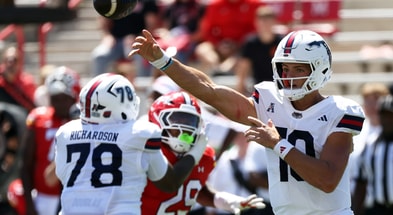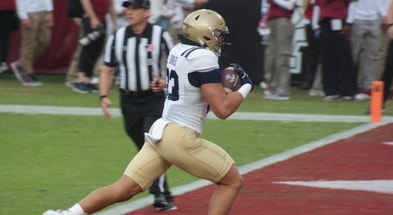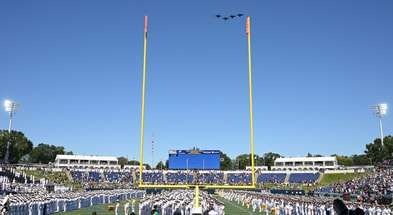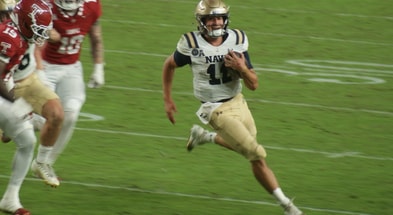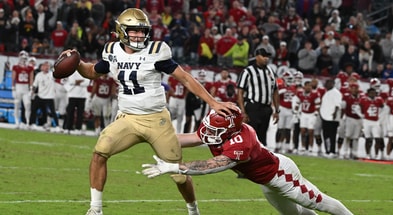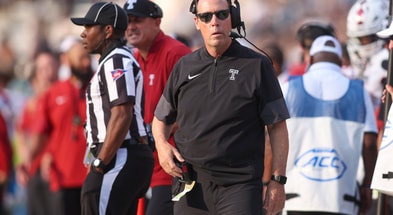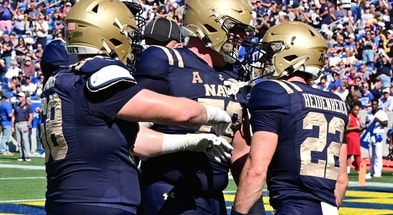The Notre Dame Preview
When I first sat down to ponder this year’s Navy-Notre Dame game, it occurred to me that this will be the first matchup between the two since John Feinstein passed away back in March.
Feinstein’s loss was a terrible blow to service academy football. In an age when the sport seems determined to leave the service academies behind, he was their most vocal advocate in the national media. Every time I see a talking head argue for moving Army-Navy to the beginning of the season, it makes losing him all the more painful. Nobody would have been more eager to put those people in their place. It would’ve been awesome to watch.
But as much as Feinstein loved the Army-Navy game, man, he sure hated Navy-Notre Dame. To him, that series (don’t call it a rivalry!) is the opposite of Army-Navy; a prime example of college football’s elite picking on a disadvantaged program. Or, as he put it, “Notre Dame continues the series because it should be an easy win that no one will ever criticize and because it never has to play a road game.”
If you’ve been reading my work for any length of time, it probably comes as no surprise that I disagree with that assessment. But that’s not really the point here; I’m not going to start an argument with someone who isn’t here to respond, not that I would’ve ever appeared on Feinstein’s radar to begin with. Instead, I only bring this up because if he were here, I feel confident saying that Feinstein would have really hated this year’s matchup. That’s because this Fighting Irish team is the very definition of elite. This is the most complete Notre Dame squad that Navy has faced in years.
That seems like a crazy thing to say about a program coming off a national championship game appearance, but both on tape and in the stat book, I don’t think there’s much debate. Last year’s Notre Dame team was a power-running freight train, rolling for 200 yards per game on the ground and 5.66 yards per rush. This year, they’re doing it all. They run for over 187 yards per game behind the superstar tandem of Jeremiyah Love and Jadarian Price, who both average more than 6 yards per carry. But now, they throw the ball too, thanks to the live arm of quarterback C.J. Carr. He’s not dinking and dunking his way down the field either. The redshirt freshman is performing at a level far above his age, throwing for 257 yards per game. His 9.8 yards per attempt are fourth in the country.
Notre Dame head coach Marcus Freeman was the defensive coordinator at Cincinnati from 2017-2020, while offensive coordinator Mike Denbrock had the same job with the Bearcats from 2017-2021. When you watch the Irish, you can see similarities with those teams. Cincinnati was the only Group of 5 program to reach the four-team Playoff, and it did so by being built differently from other G5 contenders. They weren’t one of those teams with a whirlwind offense that hoped to get the last possession in a shootout. This team was comprised of maulers, boasting a top-ten defense and an offense featuring a 1,300-yard running back and a quarterback who threw for over 3,000 yards. This Notre Dame team is built in much the same way, but with even better components.
It makes defending them a matter of picking your poison. In the past, Notre Dame has treated Navy as a “get right” game. If they’ve struggled to run the ball during the season, they’ll pound the rock 40 times against Navy. If they need to get their quarterback on track, they’ll air it out against Navy. That would often give you a clue as to how the Irish would attack the Mids. But with this year’s team, there’s nothing they need to fix. They excel in everything they do. So how on earth is Navy supposed to defend against that?
To get an idea, we could look back at how the Navy defense treated the best of those Denbrock-led Cincinnati offenses. In 2021, the Bearcats were ranked #2 in the country when they came to Annapolis, and the Mids limited them to 271 yards. They had only ten rushing yards in the first half. A significant reason for this was that the Mids were fearless about involving the secondary in run support.
But I just can’t imagine that’s the path Navy will take on Saturday. This year’s Notre Dame team, in addition to being consistent, is also explosive. They average 6.6 plays of 20 yards or more per game, which is the fourth-most in the country. It’s a cliche in situations like this to say that Navy needs to prevent the big play and force the opponent to drive the field, reducing the number of possessions and shortening the game. However, in this case, I think that’s the most prudent —and most likely —path for the Mids.
Even that will be easier said than done, though. While receiver Jaden Greathouse has been nursing his way back from a hamstring injury, everyone else has picked up the slack. Fellow receiver Jordan Faison leads the team with 39 receptions for 518 yards. Malachi Fields, a transfer from Virginia, is the primary deep threat, averaging 19.1 yards per catch. Tight end Eli Raridon is a matchup nightmare at 6-7, 252, and he’s turned that into 24 catches for 406 yards. The Irish are effective in part because they don’t have one player you can key on. Everyone eats.
Unfortunately for the Mids, it’s the same story with Notre Dame’s defense. The Irish have one of the top run defenses in the country, allowing only 89.6 yards per game and 2.85 yards per rush. While they give up yards through the air, their pass defense still makes game-changing plays. They lead the nation with 16(!) interceptions, and they have 15 sacks in their last four contests. When you consider all the players they lost from last year, including two-time All-American Xavier Watts at safety, it’s remarkable consistency. That’s especially true considering that Notre Dame doesn’t restock through the portal the way most teams do; these are home-grown talents.
Navy’s offense will need to hold serve right off the bat in this game, which is a problem considering that more unknowns are facing them compared to years past. Former defensive coordinator Al Golden left for the NFL. Over the last few years, Notre Dame has employed an essentially unchanged defense, combining elements from Freeman’s option defenses at Cincinnati and Golden’s time at Temple and Miami. Now, with new defensive coordinator Chris Ash, one wonders if Notre Dame will continue with the look that has been working for them, or if Ash will add his own influence to the plan.
When Ash faced Navy as the defensive coordinator of Ohio State in 2014, he kept things simple. The defensive end (#1 in the count) would always take the fullback. The outside linebacker (#2) would slow-play the pitch read, stringing out the play as long as he could. That would give the middle linebacker time to run downhill to either the quarterback or the pitch.
Over the last few years, Notre Dame has been more complicated. One of the hallmarks of Notre Dame’s defenses against the Mids has been the use of multiple fronts. Last year, they lined up in an 8-man front, a 6-man front, and a 5-man front, often shifting between them in response to Navy’s own pre-snap movement. For most of the afternoon, regardless of how they lined up, Notre Dame used a three-deep zone. When they used two deep safeties, one would step up in run support based on the motion Navy used. When they were in an 8-man front, the deep safety would follow the motion while a backside defender rotated up to cover the deep middle.
Somewhere in there is the answer to what Notre Dame will do on Saturday. Will Freeman insist on using what worked for him last year? Will Ash’s old plan be incorporated into the mix? Navy doesn’t have the luxury of taking a drive or two to figure things out. They need to move the ball from the opening whistle to hold serve.
One thing that helps Navy’s cause somewhat is injuries. The Irish will be missing both starting interior linemen, Donovan Hinish and Gabriel Rubio. Not that their replacements won’t also be high-level talents, but in this game, you’ll take whatever edge you can get. Linebacker Drayk Bowen leads the defense with 50 tackles, so getting to the second level to block him will be a priority for the offensive line.
Overall, Navy’s offense will be walking a tightrope. The Mids did a reasonable job running the ball last year, averaging 5.5 yards per carry. A similar performance would go a long way for them if they can avoid the wide variety of mistakes that doomed them. Unfortunately, the same thing could have been said last week, and Navy still found ways to shoot themselves in the foot. The Mids will want to pick their spots to take shots downfield, especially against a Notre Dame secondary that has allowed 34 passes of 20+ yards. However, they must capitalize when they do, because if they are knocked off schedule, they risk giving the ball back to an offense that will almost certainly score plenty of points.
It’s hard to take much good from the North Texas performance, but if nothing else, it should at least take some pressure off the Mids this week. They won’t have an undefeated record to defend, they won’t have the weight of a national ranking on their shoulders, and the game doesn’t factor into the conference race. Hopefully, that helps the team to play with nothing to lose. Navy has an offense that can compete with anyone. Now is the time to prove it.
